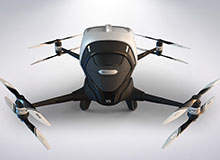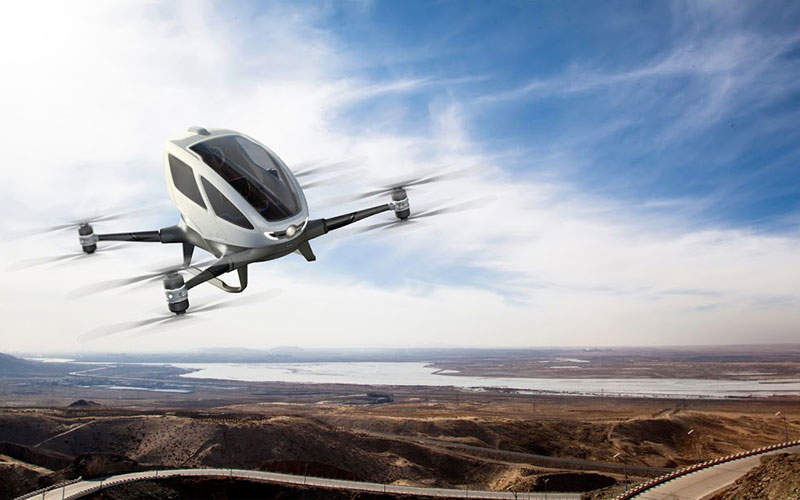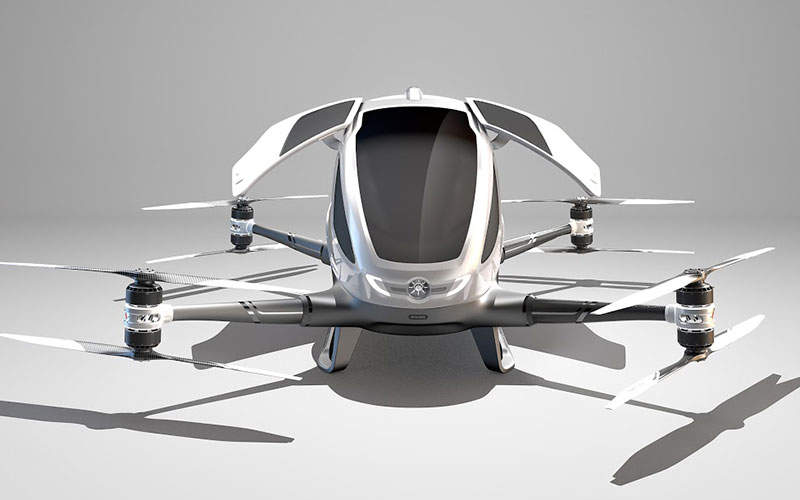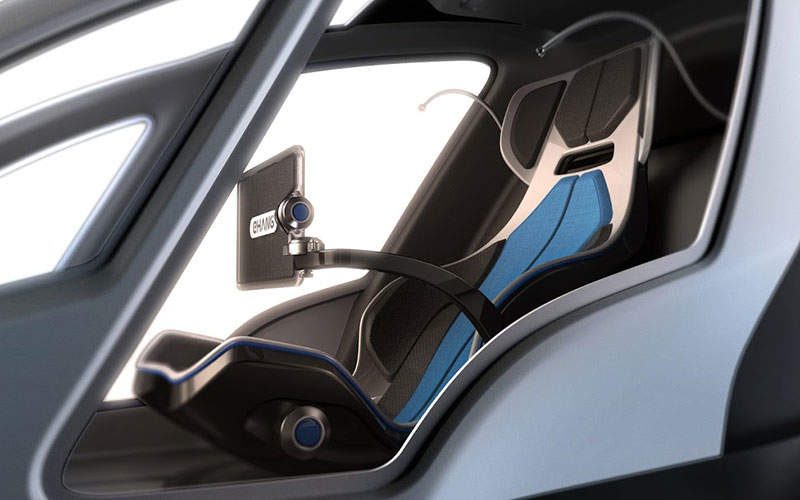Chinese drone manufacturing company EHang has designed and developed the world’s first electric-powered autonomous aerial vehicle (AAV). Named Ehang 184, the AAV is a low-altitude drone that can carry a single passenger for 23 minutes of flight at sea level. It was introduced at the Consumer Electronics Show (CES) in January 2016.
The drone is designed for daily use and built using entirely new technology. EHang plans to work closely with government agencies across the world to develop the 1Ehang 84 AAV and formulate regulations for the future of transportation.
Design and features of the AAV
The Ehang 184 is constructed using a composite material of carbon fibre and epoxy with aerial aluminium alloy. It flies in an inverted U-shape based on altitude as well as the latitude of the origin and termination points.
The vehicle has four arms and occupies the same parking space as consumer cars when the arms are folded. It has an unfolded total span of 18ft (5.5m) and folded span of 5ft 3in (1.6m). The vehicle includes a trunk and power system composed of four arms and eight propellers at the bottom.
The aircraft can take off and land vertically, eliminating the need for a runway. It has a horizontal shaft distance of 242.2cm and vertical shaft distance of 238.8cm.
It is embedded with an EHang fail-safe system that will make the aircraft land in the nearest possible area to ensure safety in the event of malfunction or disconnect of components. It also includes a downward-facing video camera.
The external dimensions of the vehicle include a length of 3.86m, width of 3.89m and net height of 1.44m. The bottom clearance is 21cm and arm angle is 7.5°.
Flight control systems
The aircraft uses multiple independent flight control systems to guide passengers from point A to point B. The flight control systems are combined with real-time data collected by multiple sets of sensors throughout the flight. The real-time data will allow the fastest and safest route to be planned.
The aircraft features an automatic navigation system, which doesn’t require a professional pilot. The communication system for the aircraft was designed to comply with a safety guarantee, as every system is encrypted and each vehicle comes with an independent key. The passenger can either choose to halt the flight or hover in the air with just a single click in the event of an emergency.
Cabin details
The Ehang 184 AAV can accommodate a single passenger in the cabin. The cabin has a height of 2.07m and width of 1.01m. It features two gull-wing doors for entry and exit. The passenger seat is designed similarly to an F1 racing car seat. Passengers can easily input commands through a 12in control pad conveniently attached to the seat arm.
The cabin features a built-in air-conditioner that automatically adjusts the in-cabin temperature. It also includes 4G Wi-Fi internet, dual-colour reading light, four arm lights, signal light, headlight and a 96V charging port.
Power and performance details
The AAV is powered by eight motors, which generate a maximum output power of 106KW. The aircraft is 100% electric and doesn’t depend on fossil fuels. The propeller has a length of 1.5m.
The full battery consumption is 14.4kwh, and the battery charging time for trickle charge is four hours, while fast charge takes two hours.
The aircraft has an average cruising speed of 100km/h and can fly for 23 minutes of duration at sea level. It has a net weight of 200kg and can carry a load of up to 100kg. It is designed to fly at low altitudes of less than 500m.









